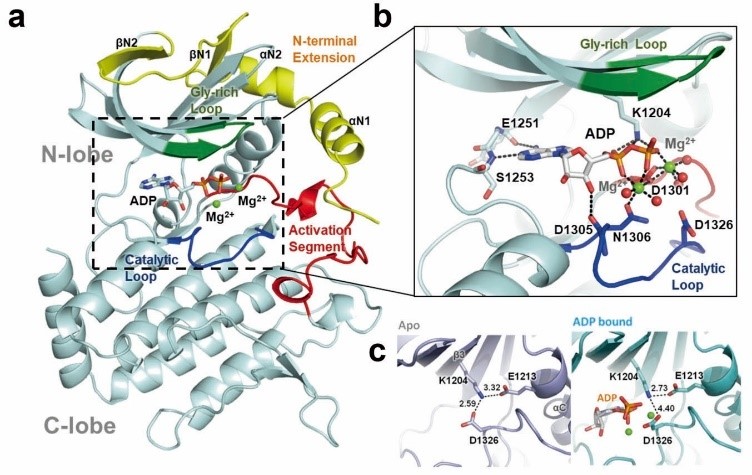From BubR1 Crystal and Chemical Probes to Targeted Oncotherapy
In a study published in Cell Research, Prof. YAO Xuebiao’s team from University of Science and Technology of China (USTC) of the Chinese Academy of Sciecnes (CAS), collaborating with ZHANG Rongguang’s team from Shanghai Institute of Biochemistry & Cell Biology of CAS, reported a breakthrough in decoding the structure elements underlying BubR1 kinase.
Based on the crystal structure of BubR1 they solved, the researchers identified a first in class kinase inhibitor coined bubristatin from Chinese herbs. Using bubristatin as the tool, theyuncovered a novel signaling cascade BubR1-CENP-E in cell division control.
Serious error can occur in cell’s division, especially in the phase when chromosomes are separated from one another. BubR1 was found as an important mitotic regulator to ensure the health and quality of daughter cells during cell division.
“Similar to security checkpoints in airports, cells of our body also have the checking systems to prevent accidents, if some stuff in our luggage are inappropriate, we have to wait longer and get rid of them,” said YAO.
There are many reports regarding the perturbation of BubR1 function in the pathogenesis of gastric cancer and liver cancer. However, it has remained elusive that how perturbation of BubR1 function contributes to tumor formation and progression, and what can be done to make correction so incidence of gastrointestinal tumor can be reduced.
Prof. YAO’s team have embarked on their mission to decode BubR1 structure-activity relationship since 2012. They studied the crystal structure of BubR1, and revealed that the BubR1 kinase domain adopts a canonical kinase fold with an unusual N-terminal extension that wraps around its N-lobe and stabilizes the activation segment through hydrophobic interactions.

Crystal structures of BubR1. Credit: Yao/Nature
By studying BubR1, the researchers expand their knowledge of accuracy in mitosis, and dug further into the therapeutic applications. The challenge ahead is to translate the bubristatin into targeted chemotherapy in clinic oncology as many solid tumors such as hepatocarcinoma exhibit persistent hyperactivity of BubR1.
“A combination of disease-bearing BubR1 mutant gastrointestinal organoids... could be used to screen and identify synthetic lethal effects, an exciting avenue for precision therapeutics.”
USTC has been working on a novel educational and research plan on biology and medicine which will pave the way for engineering the first China-made targeted therapeutics from bubristatin.
Back
